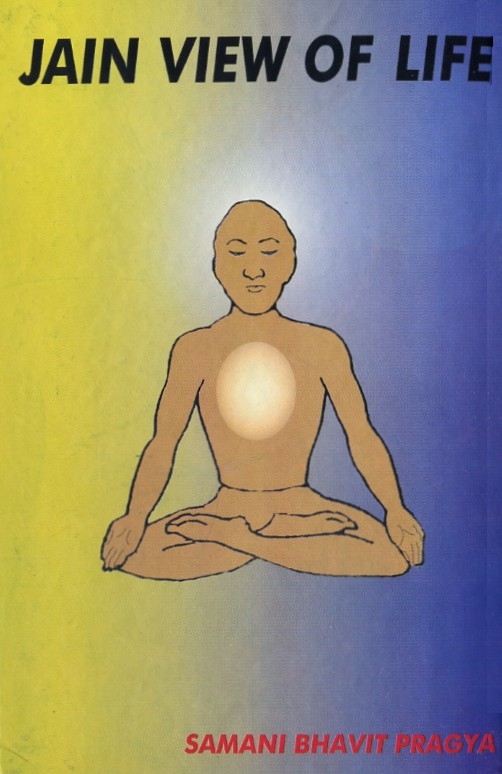Non-Absolutism
Anekanta is the fundamental principal of the complexity of reality. It is the view in the domain of thought. The word Anekanta consists of three words; anek means ' many, anta signifies attributes and vada refers to the description which means the description of manifold attributes. Anekanta regards each and every object which is synthesis of qualities of permanence and change, similarity and difference, etc. From the point of view of substance, it is permanent, and, from the stand point of modes, it is changing. Without substance mode does not exist and vice-versa. Both are inseparable and complementary. Jiva is substance and its various states are modes. Substance and modes are not different entities.
Triple Qualities of an Object
Each and every object has the triple qualities of origination, destruction, and permanence. Take the example of a bracelet which is made up of gold. A goldsmith takes a bracelet and breaks it to make earrings. In this process, the substance "gold" remains as it was, but the form of gold has been changed from bracelet to earrings. From the substance point of view, gold is permanent and from the mode point of view, gold is transitory. The doctrine of non-absolutism is useful for understanding and analyzing each premise or situation. Anekanta says that if a person looks at a thing from a single perspective, he understands the thing only partially. If the same person applies the principal of multiplicity of viewpoints and analyses the object from different perspectives or points of view, then he will understand it well.
Syadvada: Predicational Expression
Relativism is the logical and predicational expression of the fundamental principle. It is very useful in the sphere of speech to communicate thoughts. The art of communication is called syadvada (relativism). Syadvada is formed of two words, syat and vada. Syat refers to a point of view in a particular context. It avoids one-sided assertions. Vada represents a theory of logic and metaphysics. Syadvada means the logical expression of reality. Syadvada and naya are corollaries of Anekantavada. Naya is the psychological expression of the fundamental principal. Naya means partial knowledge about one of the innumerable aspects of an object.
Properties of a Substance
There are innumerable qualities in every object. A person speaks of one of them at a time, but there exists so many sides of which to speak. According to Jainism, the whole truth about a particular object can be comprehended, but it cannot be communicated. We can explain one of the properties of a substance at a time. For example, a man is father to his son, son to his father, brother to his sister, nephew to his uncle, student to his teacher, teacher to his students, etc. Thus, he has a multitude of relations and qualities. So when parenthood is referred to, that is true, but only in relation to his son. This is not true in relation to his brother. As Lord Mahavira has said, "Absolute truth cannot be grasped from any particular viewpoint. This is because truth is the sum of all the different viewpoints."
Another illustration is also conceivable. A person is a writer, a singer, a poet, an attorney, an orator, and so on. All these attributes may abide in one person, but yet they are all relative. For example, when we say that one is an orator, we understand one's speaking capacity and designate him as an orator. But when we say he is prolific writer, then his speaking capacity is not comprehended, only his prolific writing capacity is taken into consideration.
Supplementary Statements
Truth is relative to different viewpoints. What is true from one point of view is open to question from another. When it is said that man is mortal, then a person is simply emphasizing the phenomena of birth and death of the body. When it is said that man is immortal, then he is emphasizing the imperishable nature of soul. Both these statements are supplementary to each other. They do not oppose each other, rather, they help us understand things precisely. As a milkmaid renders butter out of curds by drawing up one side of a rope and then loosening the other side, similarly, an object should be understood from many points of view. Then we arrive at a definitive conclusion, otherwise, conflicts and struggle will crop up.
Proper Way of Understanding
The principal of syadvada deserves the respect of all viewpoints. By this we can resolve many conflicts and frictions born out of improper understanding. It also insists that all facts and assertions should be studied in relation to the particular point of view of substance, time, place, essence, etc.
For illustration, there is the story of the blind men and the elephant. The first blind man grasped an elephant by the leg, and he said that elephant was like a pillar. The second one touched the tail of the elephant and claimed it was a stick. The third one, who had hold of the ear, said that the elephant was like a winnowing basket. The fourth one who happened to touch the side of the elephant said it was like a wall. The fifth touched the trunk and affirmed it was like the branch of the tree. The sixth one who caught the tusk said it was like a spear.
Afterwards, all the men started to quarrel, each emphasizing his opinion. Suddenly, a man with sight came and said to the blind men that they were each correct because-they had each realized a partial truth concerning the elephant. However, they were all wrong as well because they had each wanted to pass off their partial truth as whole truth. The man said to them that, if they wanted the whole truth, they needed to put all their thoughts together. Only, after doing this, they would get the whole picture of the elephant. This is a fact if one sticks to only one of many manifold aspects of an object, ignoring and rejecting all others, he will never realize the truth. Truth is many sided. It is not the monopoly of any individual or any group. That is why, in order to comprehend Anekanta fully, the term syat must be qualified.
Relativism, the Principle of Harmony
Relativism is the principle of harmony, reconciliation, and coordination. The story of the fingers on the hand illustrates this point. Once there was a dispute among the fingers on a hand. The index finger said, "I am the elder among you because I write and paint. Furthermore, if someone makes a mistake, I warn him with a shake. That is why I am the biggest." At that moment, middle finger said, "I am the elder in size and stature, also, I give pleasure by playing instruments. That is why I am the elder." The ring finger could not keep silent and said, "All auspicious activities are performed by me, so I am the elder here." It was hard for the little finger to listen to the power of the others' claims. On the spot it said, "I am also an elder because I have a special quality." The other three fingers said to the little one, "Be silent, you are so small, why do you boast?" The little finger replied, "When a person feels an itch, I present myself in service right away."
Thus, all the fingers were quarreling. The thumb finally spoke up, "Every statement is only a relative truth. All judgements are true in some sense and false in another. All your statements depend on each other or on a particular point of view from which we appreciate that proposition. So you see, none is superior to the other and none is inferior to the other. Once each of you coordinates your point of view with all the others, you will find that you can maintain your superiority."
The Theory of Relativity in Einstein's View
The theory of relativity was formulated by Einstein. He was a great scientist and philosopher of the modern age. Einstein explained the theory of relativity in this way; when a man talks to a beloved girl for an hour, it seems to him like only a minute, but when he sits near a hot stove for a minute, it seems like an hour.
Saptabhangi - Seven Predicates
Syadvada is a scientific method of logic, whereas, saptabhangi is the principle of explaining something in detail. Syadvada is divided into seven predicates with reference to an object. An object should be considered from the point of view of substance, place, time, and essence.
The seven fold predicates are only an expression of the many facets of reality for the sake of comprehension. By combination of positive aspect (asti), and the negative aspect (nasti), and the aspect of inexpressibility (avaktavya), the seven predicates have been formed.
- The positive aspect (syat asti - which means "maybe it is").
- The negative aspect (syat nasti - which means "maybe it is not").
- The confluence of positive and negative aspects (syat asti syat nasti - which means "maybe it is and is not").
- The inexpressive aspect (syat avaktavya - which means maybe it is indescribable").
- The confluence of positive and inexpressible aspects (syat asti syat avaktavya - which means "maybe it is and is indescribable").
- The confluence of negative and inexpressive aspects (syat nasti syat avaktavya - which means "maybe it is not and is indescribable").
- The confluence of positive, negative and inexpressible aspects (syat asti syat nasti syat avaktavya - which means "maybe it is and is not and is indescribable").
To explain various aspects of reality, the assertion of the seven-fold predicates is needed. The doctrine of non-absolutism provides a rational synthesis of various viewpoints and rejects the assertion of bare absolutes. It counsels us not to present partial truth and half truths, and teaches the basic lesson of tolerance. Non-absolutism opens the doors to a richer understanding of reality.
 Samani Bhavit Pragya
Samani Bhavit Pragya
